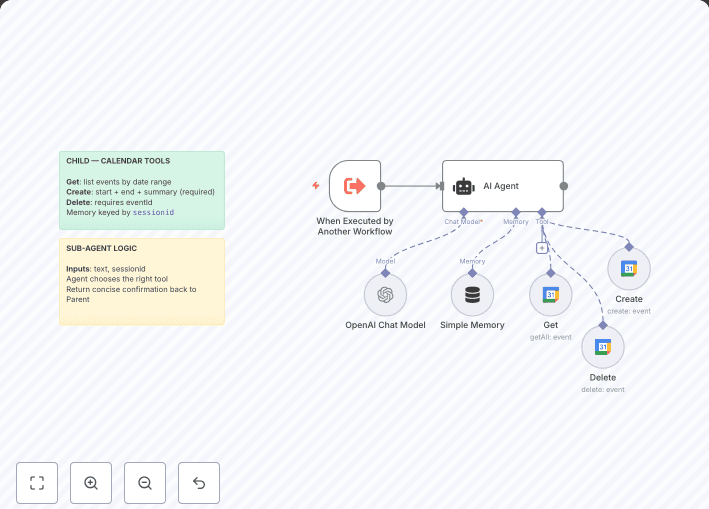This workflow builds a conversational AI chatbot agent using Claude 3.7 Sonnet model with the new . It enhances standard LLM capabilities with Anthropic’s features: Web Search and Think :
- Real-time web search , to answer up-to-date factual queries.
- A “Think” function , to support internal reasoning and memory-like behavior by Anthropic.
- A memory buffer , allowing the agent to maintain conversation history.
- A system prompt defining clear ethical, functional, and formatting rules for interaction.
When a user sends a message (trigger), the chatbot evaluates the query, optionally performs a web search if needed, processes the result using Claude, and responds accordingly.
✅ Advantages
-
🧠 Enhanced Reasoning Abilities
The Think tool allows the agent to simulate deep thought processes or contextual memory storage, improving conversational intelligence.
-
🌐 Real-Time Knowledge via Web Search
The integrated web_search tool enables the agent to fetch the latest information from the internet, making it ideal for dynamic or news-driven use cases.
-
🧾 Contextual Responses with Memory Buffer
The inclusion of a memory buffer allows the agent to maintain state across messages, improving dialogue flow and continuity.
-
🛡️ Built-in Ethical Guidelines
The system prompt enforces privacy, factual integrity, neutrality, and ethical response generation, making the agent safe for public or enterprise use.
How It Works
- Chat Trigger : The workflow begins when a chat message is received via a webhook. This triggers the AI Agent to process the user's query.
- AI Agent Processing : The AI Agent analyzes the query to determine if it requires information from the website or external sources. It follows a structured approach:
- For website-related queries, it uses the provided context.
- For external information, it employs the
web_search tool to fetch up-to-date data from the internet.
- The
Think tool is used for internal reasoning or caching thoughts without altering data.
- Language Model : The Anthropic Chat Model (Claude 3.7 Sonnet) generates responses based on the analyzed query, incorporating website context or web search results.
- Memory : A simple memory buffer retains context from previous interactions to maintain continuity in conversations.
- Output : The final response is delivered to the user, excluding internal processes like web searches or reasoning steps.
Set Up Steps
-
Configure Nodes :
- Chat Trigger : Set up the webhook to receive user messages.
- AI Agent : Define the system message and rules for handling queries.
- Anthropic Chat Model : Select the Claude 3.7 Sonnet model and configure parameters like
maxTokensToSample.
- Memory : Initialize the memory buffer to store conversation context.
- Tools :
web_search: Configure the HTTP request to the Anthropic API for web searches, including headers and authentication.Think: Set up the tool for internal reasoning.
-
Connect Nodes :
- Link the Chat Trigger to the AI Agent.
- Connect the Anthropic Chat Model, Memory, and Tools (
web_search and Think) to the AI Agent.
-
Credentials :
- Ensure the Anthropic API credentials are correctly configured for both the chat model and the
web_search tool.
Need help customizing?
Contact me for consulting and support or add me on Linkedin.


